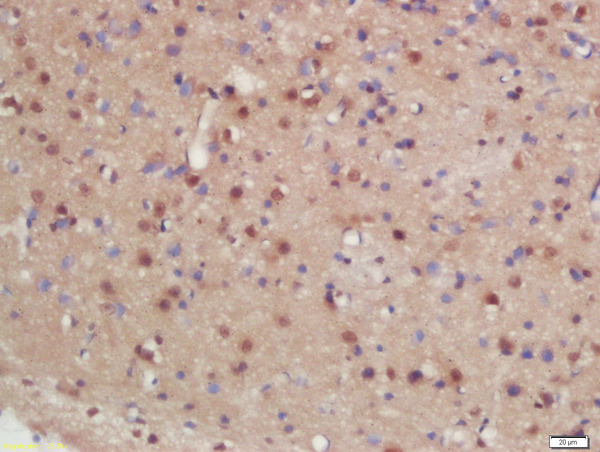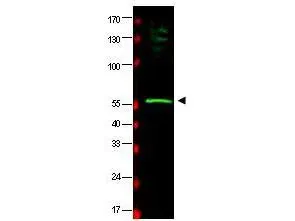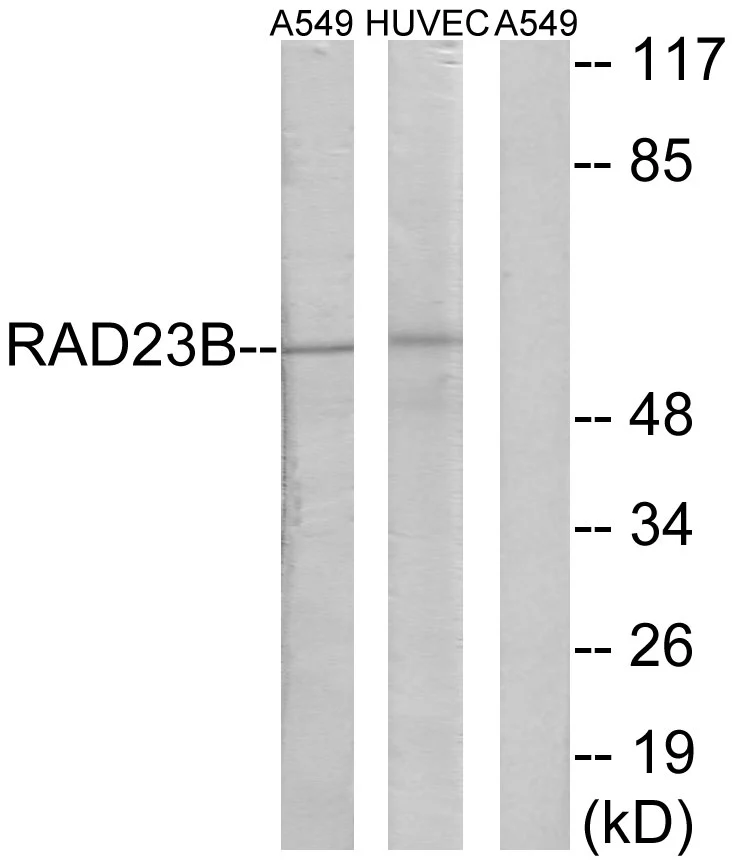![ICC/IF analysis of 4% PFA-fixed HeLa cells using GTX66845 RAD23B antibody [5H1]. Dilution : 1:100 ICC/IF analysis of 4% PFA-fixed HeLa cells using GTX66845 RAD23B antibody [5H1]. Dilution : 1:100](https://www.genetex.com/upload/website/prouct_img/normal/GTX66845/GTX66845_20190305_ICCIF_w_23061221_526.webp)
ICC/IF analysis of 4% PFA-fixed HeLa cells using GTX66845 RAD23B antibody [5H1]. Dilution : 1:100
RAD23B antibody [5H1]
GTX66845
ApplicationsImmunoFluorescence, Western Blot, ImmunoCytoChemistry, ImmunoHistoChemistry, ImmunoHistoChemistry Paraffin
Product group Antibodies
TargetRAD23B
Overview
- SupplierGeneTex
- Product NameRAD23B antibody [5H1]
- Delivery Days Customer9
- Application Supplier NoteWB: 1:1000. ICC/IF: 1:50-1:200. IHC-P: 1:50-1:200. *Optimal dilutions/concentrations should be determined by the researcher.Not tested in other applications.
- ApplicationsImmunoFluorescence, Western Blot, ImmunoCytoChemistry, ImmunoHistoChemistry, ImmunoHistoChemistry Paraffin
- CertificationResearch Use Only
- ClonalityMonoclonal
- Clone ID5H1
- ConjugateUnconjugated
- Gene ID5887
- Target nameRAD23B
- Target descriptionRAD23 nucleotide excision repair protein B
- Target synonymsHHR23B, HR23B, P58, UV excision repair protein RAD23 homolog B, RAD23 homolog B, nucleotide excision repair protein, RAD23, yeast homolog of, B, XP-C repair complementing complex 58 kDa, XP-C repair complementing protein, XP-C repair-complementing complex 58 kDa protein
- HostMouse
- IsotypeIgG
- Protein IDP54727
- Protein NameUV excision repair protein RAD23 homolog B
- Scientific DescriptionThe protein encoded by this gene is one of two human homologs of Saccharomyces cerevisiae Rad23, a protein involved in the nucleotide excision repair (NER). This protein was found to be a component of the protein complex that specifically complements the NER defect of xeroderma pigmentosum group C (XP-c) cell extracts in vitro. This protein was also shown to interact with, and elevate the nucleotide excision activity of 3-methyladenine-DNA glycosylase (MPG), which suggested a role in DNA damage recognition in base excision repair. This protein contains an N-terminal ubiquitin-like domain, which was reported to interact with 26S proteasome, and thus this protein may be involved in the ubiquitin mediated proteolytic pathway in cells. Alternative splicing results in multiple transcript variants encoding distinct isoforms. [provided by RefSeq, Sep 2011]
- Storage Instruction-20°C or -80°C,2°C to 8°C
- UNSPSC12352203

![IHC-P analysis of prostate cancer tissue using GTX66845 RAD23B antibody [5H1]. Antigen retrieval : citrate buffer (pH 6.0) IHC-P analysis of prostate cancer tissue using GTX66845 RAD23B antibody [5H1]. Antigen retrieval : citrate buffer (pH 6.0)](https://www.genetex.com/upload/website/prouct_img/normal/GTX66845/GTX66845_20190305_IHC-P_w_23061221_821.webp)
![WB analysis of K562, SW480, CHO-K1, 3T3, and COS7 cell lysates using GTX66845 RAD23B antibody [5H1]. Dilution : 1:1000 WB analysis of K562, SW480, CHO-K1, 3T3, and COS7 cell lysates using GTX66845 RAD23B antibody [5H1]. Dilution : 1:1000](https://www.genetex.com/upload/website/prouct_img/normal/GTX66845/GTX66845_20190305_WB_w_23061221_284.webp)






![ICC/IF analysis of HeLa cells using hHR23b antibody [5H1-A10-A7] at a dilution of 1:100.](https://www.genetex.com/upload/website/prouct_img/normal/GTX16485/GTX16485_ICCIF_w_23060620_777.webp)